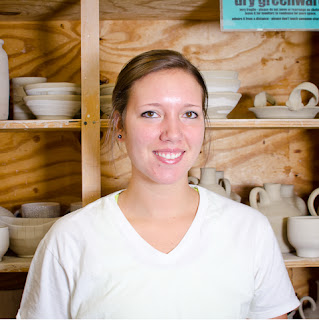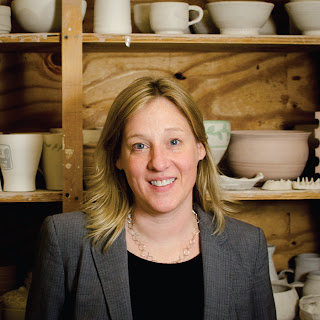1. What is your name (I may not always be able to tell by your email)?
My name is Lori Hess, aka "Lolitos" ; ) (don't print that)
(Editor -- if you type it, I will print it. LOL)
2. When did you start coming to Lillstreet?
I started coming to Lillstreet in January of 2012 after my father passed away. Having been a caregiver to both of my parents for many years, it was time that I rediscovered my creativity and a friend encouraged me to take a pottery class with him.
3. What brought/brings you to Lillstreet?
What brings me to Lillstreet (almost daily!) are the people, the cooperative effort that keeps Lillstreet a distinct community, and of course, the opportunity to create and learn.
4. What is the nature of your clay work -- functional or sculptural?
My clay work is currently functional, mostly bottles, bowls, cups, containers, and bird feeders.
5. What is your process? Do you sketch, prototype and conceptualize? etc.
My process is yet undefined as I am still learning! Let's just say it's an "adventure".
6. What or who influence your work?What influences my work is nature; I love birds, bees, trees, etc., and organic forms/textures that represent nature. Who influences my work currently are my fellow Lillstreet students, teachers, and Simon Leach!
7. Do you work with other medium besides clay?
Other mediums: Painting with oils, but have put down the brush now for several years (due to caregiving and corporate job), and my other medium, I would say is food. I am a very creative cook and enjoy preparing healthy, and elaborate meals.
8. What are your duties as a monitor?
My duties as a monitor are unloading/loading the kiln, cleaning the clay studio (my son helps!), consolidating bisque and glaze carts, assisting students who need to buy clay, tools, and help finding their work, answering general questions, and always (whenever I'm there!) cleaning, cleaning, cleaning!
9. If there’s one thing you absolutely have to inform the Lillstreet clay community that would make your work easier, what would it be?
The one thing that I would love to inform the clay community of is that we really need their participation in keeping the studio clean(er). Many students and teachers do not seem to know or understand that it is their own responsibility to clean up after themselves, everywhere they've worked! Another thing that I want them to know is that Lillstreet is an amazing place that we need to respect, love, and nurture it to keep it going!
(Editor: If you've read a few of these, you must be starting to see a theme here -- make sure you clean up after yourself. Clean the wheel after you're done, Wipe down the table you've been using. Return equipment to where you found them. Report issues so that they can be taken care of as soon as possible. Keeping Lillstreet clean and functional for everyone is everyone's responsibility -- not just that of the monitors. Let's all play out part!)









